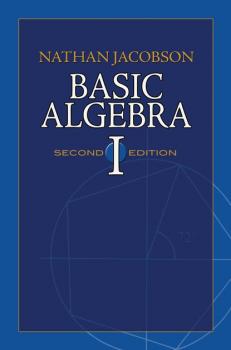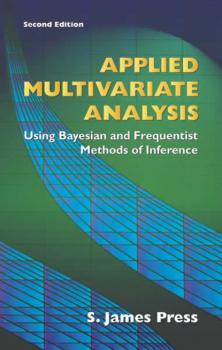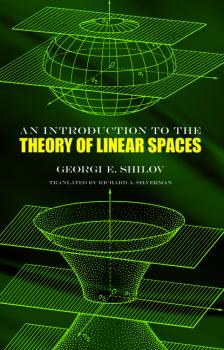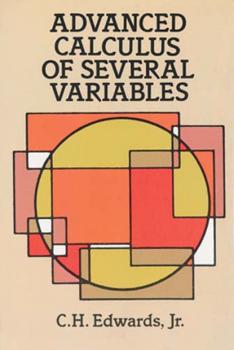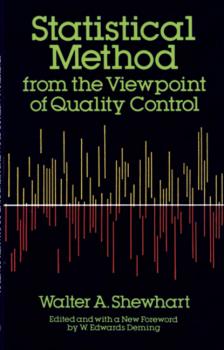ТОП просматриваемых книг сайта:
Dover Books on Mathematics
Скачать книги из серии Dover Books on MathematicsАннотация
A classic text and standard reference for a generation, this volume and its companion are the work of an expert algebraist who taught at Yale for two decades. Nathan Jacobson's books possess a conceptual and theoretical orientation, and in addition to their value as classroom texts, they serve as valuable references.Volume I explores all of the topics typically covered in undergraduate courses, including the rudiments of set theory, group theory, rings, modules, Galois theory, polynomials, linear algebra, and associative algebra. Its comprehensive treatment extends to such rigorous topics as Lie and Jordan algebras, lattices, and Boolean algebras. Exercises appear throughout the text, along with insightful, carefully explained proofs. Volume II comprises all subjects customary to a first-year graduate course in algebra, and it revisits many topics from Volume I with greater depth and sophistication.
Аннотация
Geared toward upper-level undergraduates and graduate students, this two-part treatment deals with the foundations of multivariate analysis as well as related models and applications. Starting with a look at practical elements of matrix theory, the text proceeds to discussions of continuous multivariate distributions, the normal distribution, and Bayesian inference; multivariate large sample distributions and approximations; the Wishart and other continuous multivariate distributions; and basic multivariate statistics in the normal distribution. The second half of the text moves from defining the basics to explaining models. Topics include regression and the analysis of variance; principal components; factor analysis and latent structure analysis; canonical correlations; stable portfolio analysis; classifications and discrimination models; control in the multivariate linear model; and structuring multivariate populations, with particular focus on multidimensional scaling and clustering.In addition to its value to professional statisticians, this volume may also prove helpful to teachers and researchers in those areas of behavioral and social sciences where multivariate statistics is heavily applied. This new edition features an appendix of answers to the exercises.
Аннотация
This rigorous two-part treatment advances from functions of one variable to those of several variables. Intended for students who have already completed a one-year course in elementary calculus, it defers the introduction of functions of several variables for as long as possible, and adds clarity and simplicity by avoiding a mixture of heuristic and rigorous arguments.The first part explores functions of one variable, including numbers and sequences, continuous functions, differentiable functions, integration, and sequences and series of functions. The second part examines functions of several variables: the space of several variables and continuous functions, differentiation, multiple integrals, and line and surface integrals, concluding with a selection of related topics. Complete solutions to the problems appear at the end of the text.
Аннотация
Developed for an introductory course in mathematical analysis at MIT, this text focuses on concepts, principles, and methods. Its introductions to real and complex analysis are closely formulated, and they constitute a natural introduction to complex function theory.Starting with an overview of the real number system, the text presents results for subsets and functions related to Euclidean space of n dimensions. It offers a rigorous review of the fundamentals of calculus, emphasizing power series expansions and introducing the theory of complex-analytic functions. Subsequent chapters cover sequences of functions, normed linear spaces, and the Lebesgue interval. They discuss most of the basic properties of integral and measure, including a brief look at orthogonal expansions. A chapter on differentiable mappings concludes the text, addressing implicit and inverse function theorems and the change of variable theorem. Exercises appear throughout the book, and extensive supplementary material includes a bibliography, list of symbols, index, and appendix with background in elementary set theory
Аннотация
This introduction to linear algebra and functional analysis offers a clear expository treatment, viewing algebra, geometry, and analysis as parts of an integrated whole rather than separate subjects. All abstract ideas receive a high degree of motivation, and numerous examples illustrate many different fields of mathematics. Abundant problems include hints or answers.
Аннотация
Modern conceptual treatment of multivariable calculus, emphasizing interplay of geometry and analysis via linear algebra and the approximation of nonlinear mappings by linear ones. Over 400 well-chosen problems. 1973 edition.
Аннотация
A classic of science, this famous essay by «the Newton of France» introduces lay readers to the concepts and uses of probability theory. It is of especial interest today as an application of mathematical techniques to problems in social and biological sciences.Generally recognized as the founder of the modern phase of probability theory, Laplace here applies the principles and general results of his theory «to the most important questions of life, which are, in effect, for the most part, problems in probability.» Thus, without the use of higher mathematics, he demonstrates the application of probability to games of chance, physics, reliability. of witnesses, astronomy, insurance, democratic government and many other areas.General readers will find it an exhilarating experience to follow Laplace's nontechnical application of mathematical techniques to the appraisal, solution and/or prediction of the outcome of many types of problems. Skilled mathematicians, too, will enjoy and benefit from seeing how one of the immortals of science expressed so many complex ideas in such simple terms.
Statistical Method from the Viewpoint of Quality Control - Walter A. Shewhart
Dover Books on MathematicsАннотация
The application of statistical methods in mass production make possible the most efficient use of raw materials and manufacturing processes, economical production, and the highest standards of quality for manufactured goods. In this classic volume, based on a series of ground-breaking lectures given to the Graduate School of the Department of Agriculture in 1938, Dr. Shewhart illuminated the fundamental principles and techniques basic to the efficient use of statistical method in attaining statistical control, establishing tolerance limits, presenting data, and specifying accuracy and precision.In the first chapter, devoted to statistical control, the author broadly defines the three steps in quality control: specification, production, and inspection; then outlines the historical background of quality control. This is followed by a rigorous discussion of the physical and mathematical states of statistical control, statistical control as an operation, the significance of statistical control and the future of statistics in mass production.Chapter II offers a thought-provoking treatment of the problem of establishing limits of variability, including the meaning of tolerance limits, establishing tolerance limits in the simplest cases and in practical cases, and standard methods of measuring. Chapter III explores the presentation of measurements of physical properties and constants. Among the topics considered are measurements presented as original data, characteristics of original data, summarizing original data (both by symmetric functions and by Tchebycheff's theorem), measurement presented as meaningful predictions, and measurement presented as knowledge.Finally, Dr. Shewhart deals with the problem of specifying accuracy and precision — the meaning of accuracy and precision, operational meaning, verifiable procedures, minimum quantity of evidence needed for forming a judgment and more.Now available for the first time in this inexpensive paperbound format, this highly respected study will be welcomed by mathematics students, engineers, researchers in industry and agriculture — anyone in need of a lucid, well-written explanation of how to regulate variable and maintain control over statistics in order to achieve quality control over manufactured products, crops, and data.
Аннотация
The Pythagorean Theorem is one of the fundamental theorems of elementary geometry, and Pythagorean triangles — right triangles whose sides are natural numbers — have been studied by mathematicians since antiquity. In this classic text, a brilliant Polish mathematician explores the intriguing mathematical relationships in such triangles.Starting with «primitive» Pythagorean triangles, the text examines triangles with sides less than 100, triangles with two sides that are successive numbers, divisibility of one of the sides by 3 or by 5, the values of the sides of triangles, triangles with the same arm or the same hypotenuse, triangles with the same perimeter, and triangles with the same area. Additional topics include the radii of circles inscribed in Pythagorean triangles, triangles in which one or more sides are squares, triangles with natural sides and natural areas, triangles in which the hypotenuse and the sum of the arms are squares, representation of triangles with the help of the points of a plane, right triangles whose sides are reciprocals of natural numbers, and cuboids with edges and diagonals expressed by natural numbers.
Аннотация
Many people suffer from an inferiority complex where mathematics is concerned, regarding figures and equations with a fear based on bewilderment and inexperience. This book dispels some of the subject’s alarming aspects, starting at the very beginning and assuming no mathematical education.Written in a witty and engaging style, the text contains an illustrative example for every point, as well as absorbing glimpses into mathematical history and philosophy. Topics include the system of tens and other number systems; symbols and commands; first steps in algebra and algebraic notation; common fractions and equations; irrational numbers; algebraic functions; analytical geometry; differentials and integrals; the binomial theorem; maxima and minima; logarithms; and much more. Upon reaching the conclusion, readers will possess the fundamentals of mathematical operations, and will undoubtedly appreciate the compelling magic behind a subject they once dreaded.

